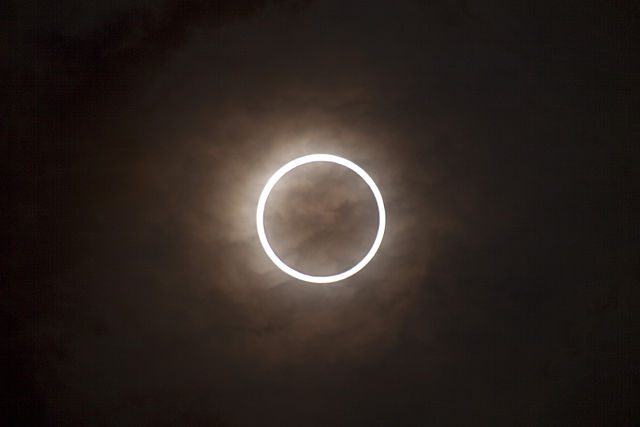Eclipse

Credit: Nakae
An eclipse is when objects in space line up. One object moves into the shadow of the other. An example would be if we were on the Moon looking back at Earth. Each day the International Space Station would pass in front of the Earth 15 times. When it did, it would eclipse the Earth.
Eclipses don’t have to be ‘total’ (an occultation) – when the passing object fully hides the more distant one. They can be transits, where only part of the more distant object is hidden.
When 3 objects in space line up in this way, we call it a syzygy.
We commonly think of eclipses when the Earth, Sun and Moon align. This can make a solar or lunar eclipse. But in space this happens all the time with more distance objects too.

